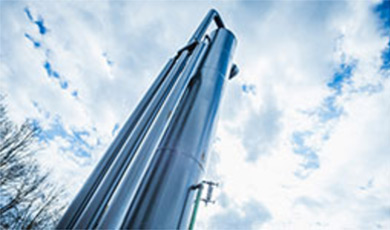- Albanian
- Arabic
- Belarusian
- Bengali
- Czech
- English
- French
- German
- Hebrew
- Hungarian
- Indonesian
- irish
- Italian
- Japanese
- kazakh
- Persian
- Russian
- Thai
- Uzbek
- Vietnamese
Design Concept for an Innovative Roller Coaster Experience
The Thrills and Dynamics of Roller Coaster Design A Sketch of an Adventure
Roller coasters have captivated thrill-seekers and amusement park enthusiasts for generations. These towering structures, with their intricate tracks and heart-pounding drops, are not just feats of engineering but also masterpieces of design, physics, and artistry. In this exploration of roller coasters, we delve into the key elements that make up a roller coaster's design and the exhilarating experience they offer.
The Anatomy of a Roller Coaster
At first glance, a roller coaster may seem like a simple ride involving ups and downs, twists and turns. However, the design of a coaster is multifaceted. The primary components include the lift hill, drops, elements such as loops and corkscrews, and the finish line, or brake run. Each of these parts is meticulously crafted to maximize velocity, minimize discomfort, and heighten the thrill.
1. The Lift Hill The journey typically begins with a steep ascent known as the lift hill. Here, riders are slowly pulled to the top, creating anticipation. This height not only offers breathtaking views but also potential energy, which will be transformed into kinetic energy during the descent. The sound of clinking chains and the gradual elevation heighten the suspense, setting the stage for the inevitable drop.
2. The Descent As physics dictates, what goes up must come down. The descent is often the most thrilling part of the ride. Riders experience a rush of adrenaline as gravity pulls them downwards. Engineers must carefully calculate the angle and height of the drop to ensure riders feel the exhilarating weightlessness—often referred to as airtime. The balance between thrill and safety is crucial a steep drop can induce excitement but should not overwhelm the rider.
3. Inversions and Elements Modern roller coasters increasingly incorporate inversions such as loops, corkscrews, and other thrilling maneuvers that defy gravity. These elements require advanced engineering to ensure that the ride remains safe while delivering an adrenaline rush. The G-forces experienced during these moves can be intense, and ride designers take great care to create an exhilarating experience without causing discomfort or exceeding safe limits.
4. The Finale The ride typically concludes with a brake run. This area slows the train down, providing a contrast to the excitement experienced throughout the ride. As riders disembark, the sense of exhilaration lingers, often prompting them to queue up for another round.
sketch of a roller coaster

The Role of Design Aesthetics
Beyond the mechanics, the aesthetic design of a roller coaster plays a significant role in its appeal. Bright colors, thrilling themes, and unique architectural elements draw visitors in and enhance the overall experience. Some coasters are designed to reflect specific themes—like a wild animal or a fantastical world—making the ride a complete sensory experience.
Designers often collaborate with artists and architects to create structures that not only function flawlessly but also stand as visually striking landmarks. For instance, the towering heights or unique silhouettes of roller coasters contribute to the park’s skyline, creating memorable experiences long before riders even step on the train.
Technology and Innovation
As technology advances, so too does the design of roller coasters. Innovations like magnetic propulsion and computer-aided design allow for more complex and exciting rides than ever before. Virtual reality, integrated into some roller coasters, offers an immersive experience, transforming how riders experience the sensations of speed and thrill. These innovations not only push the boundaries of design but also enhance safety measures, ensuring that rides remain exhilarating without compromising rider security.
Conclusion An Ever-Evolving Journey
In conclusion, roller coasters embody the perfect amalgamation of engineering, design, and sheer joy. The creative mind behind each ride seeks to balance excitement with safety, crafting an experience that is both thrilling and memorable. From the initial ascent to the final brake run, roller coasters provide a captivating adventure that continues to evolve, pushing the limits of what is possible in amusement park attractions. Whether you are a seasoned thrill-seeker or a first-time rider, the design and execution behind roller coasters promise an unforgettable journey through the air.
-
Flume Ride-Hebei Zhipao Amusement Equipment Manufacturing Co., Ltd.|Thrilling Water Attraction&Customizable DesignJul.30,2025
-
Flume Ride - Hebei Zhipao Amusement Equipment | Water Coaster, Thrilling DescentJul.30,2025
-
Flume Ride - Hebei Zhipao | Thrilling Water AttractionJul.30,2025
-
Flume Ride: Thrilling Water Attraction by Hebei Zhipao|Log Flume Manufacturers&Flume Ride DesignJul.30,2025
-
Flume Ride-Hebei Zhipao Amusement Equipment Manufacturing Co., Ltd.|Thrilling Water Coaster, Safe DesignJul.30,2025
-
Flume Ride-Hebei Zhipao Amusement Equipment Manufacturing Co., Ltd.|Thrilling Water Attraction, Safe DesignJul.30,2025
